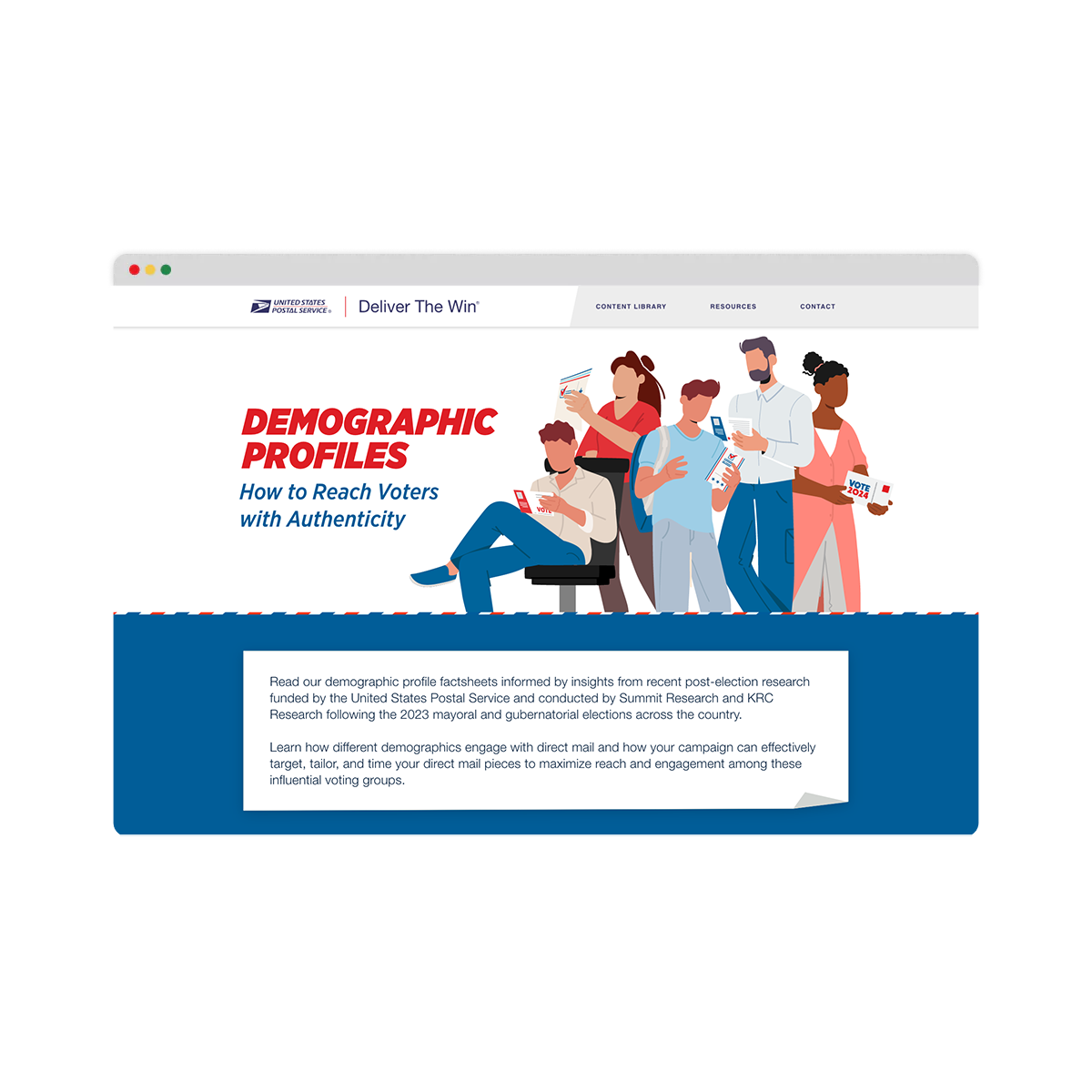October 1, 2024

Your key to authentically connecting with voters: Understanding them
One-size campaign messaging does not fit all.
Generic political messages don’t cut it with today’s diverse voter population. In fact, Black (67%), Hispanic (60%), and Asian (57%) adults find personalization more important than White adults (52%).1
To establish a meaningful connection, campaigns need to engage with their audience on a more personal level. While navigating complex voter segments can seem challenging, understanding them can empower your campaign to appeal to their unique set of concerns, preferences, and behaviors. Targeting each audience with messaging based on what resonates with them is critical to securing their support.
What you say and where you say it matters.
It’s also important to recognize that certain messages, channels, and approaches work better for some voter segments than others. For example, some voters may prefer digital media while others may be more partial to direct mail. By delivering your message through a variety of channels, you increase your chances of engaging with voters on a medium where they are most receptive. Even if a voter segment prefers a particular type of channel on average, it’s valuable to include both online and offline channels because individual preferences can vary.
Leveraging research can help make it easier to identify what voters want.
To help campaigns identify demographic preferences, Summit Research and KRC Research on behalf of the Postal Service surveyed voter segments (by race, gender, and age) to reveal what drives them to engage. They also identified how each segment interacts with direct mail. Tapping into these valuable insights can help your campaign develop targeted messaging that addresses the needs and values of each demographic.
Here are some of the insights uncovered by the research and actionable tips on how to appeal to each segment:
Asian voters:
With a wide array of cultural backgrounds encompassing the Asian voting bloc, it’s important to craft targeted and sensitive messaging for each group that is also visually striking to resonate with this demographic.
60% of surveyed Asian voters are more likely to read a mail piece if they find it visually appealing.2
Tip:
Use images that are culturally relevant and visually appealing to draw attention and resonate.
Black voters:
Black voters appreciate straightforward messaging about your candidate’s stance on policies and issues relevant to their community.
67% of surveyed Black voters believe political mail includes more facts than other political advertising channels.2
Tip:
Keep your language concise and include relevant facts on your candidate’s position to gain trust with this voter group.
Hispanic voters:
Creating tailored content goes a long way in making a memorable connection with this audience.
63% of surveyed Hispanic voters agree that direct mail was the most memorable form of political advertising.2
Tip:
Develop bilingual or Spanish-only content to help your messaging connect on a more personal level and increase memorability.
Women voters:
Delivering personally relevant content is key to motivating women voters to engage.
75% of surveyed women voters agree direct mail is one of the most credible advertising channels.2
Tip:
Tailor your direct mail pieces to include your candidate’s stance on issues women voters care about most.
Bottom line.
Recognizing your constituents’ diverse needs and concerns is key to creating an authentic connection. By leveraging demographic profiles, you can discover the most successful ways to communicate with each group. Deploying the targeting power of direct mail empowers your campaign to use these insights to authentically connect with voters and deliver messages that are more likely to resonate.

Get the Facts
Discover more valuable demographic insights and see how direct mail can help your campaign make an authentic voter connection.

